This is the seventh installment of my tutorial on scratch building tanks. In the last one I showed how I make weapons from scratch.
In this installment I cover some finishing touches such as gap filling and making accessories. I’ll show you how I modeled extra armor, a storage chest and tank, a searchlight, and smoke launchers. Here’s where I left off last time:
This tank is pretty good as it is but I like to add a little extra character to my vehicles. This can be done by raiding the bitz box, but there are a lot of cool details that can be easily scratch built.
Disclosure: Some of the links below are affiliate links, meaning, at no additional cost to you, I will earn a commission if you click through and make a purchase. The commission earned helps maintain this site.
Doing Some Gap Filling
Before I do that I want to fill in a few gaps. For most of these I used GW’s Liquid Green Stuff. It’s not really a liquid so much as a sludge, so I use a sculpting tool to apply it where I want to fill small seams.
It shrinks a little, so if you want a smooth finish you should apply a little extra and sand it smooth afterward. For larger gaps I use some regular green stuff.
Gap filling is pretty straight forward, so I won’t go much further into it here, however Thor has a tutorial on using liquid green stuff if you’re interested.
Lets move on to some more interesting details.
Leftovers for Extra Armor
In the article on making tank tracks, I created two strips of track plates that were longer than necessary for this tank. That left a couple of lengths of extra tracks that can be used to represent spare plates or plates being used for extra armor. Simply glue them on to cover up some of the larger flat areas and voiala! – extra armor!
Making a Storage Chest
If you search the internet for tank pictures you’ll find a lot of pictures of packs, chests, and other items strapped to tanks for easy transportation. Items like this can add a lot of variety to your tank models.
To make a storage chest I build a simple box from a piece of the index card stock I printed the templates one. I start by measuring out the bottom of the box (in this case 3/8″ x 5/8″), and extend the lines outward to form the sides.
I measure out the height of the box to create the sides. The squares formed at each corner will become tabs to hold everything together.
Then to one side I measure another panel equal to the bottom to create a top, then add a tab to that so I can glue it closed.
You could add tabs to the top of the side panels as well, but I didn’t find it necessary for such a small box.
I cut this out, score along the folds, and glue it together just like I did for the hull and any other structural piece of the template.
Then I cut a piece of .040 styrene for the top. I wanted a pretty crude looking box, so I left an overhang at the back to add hinges. For something closer to the box, included in the Imperial kits, you could cut the lid closer to the box size and use smaller hinges. I added a small rectangle of .040 styrene to the front for a latch, and two pieces of round styrene rod on the back for hinges.
Finally, I added a star marking the contents as property of “da Revolushun” and glued it to the tank.
Creating a Barrel
Next I wanted a barrel to hold water (or something) for the crew to drink during their scouting missions.
On a scrap of index card stock left over from the template, I measure a long strip 5/8″ wide by about 5.5″ long, and two strips 1/8″ wide.
I cut out all three and wrap the wide strip around the handle of one of my tools. Anything round will work, your barrel will be slightly wider diameter than what you wrap it around.
I wrap it once to pre-curl it, then I wrap it again while adding super glue between the layers. Be careful to keep the edges as straight as possible without creating any wrinkles in the paper. Also be careful not to get the glue between the paper and what you’re wrapping it around! The glue and paper create a laminate so the resulting tube of paper is quite rigid.
You could use a piece of any tube for this, I just wanted to show how well paper works.
To cap the barrel I trace it onto some cardboard with a pencil. I cut out around the outside of the pencil line so that the caps are just a little larger than the barrel then I glue them on. Next I take one of the two narrow strips and glue one end to the barrel. I line it up at the seam to create a smooth transition. Then I wrap this around barrel adding glue as I go.
I complete two full wraps around the barrel. Then trim the excess so that the seam lines up with the larger one. I do the same to add a second strip.
Steel drums often have a seam where the side is welded shut, but it’s not typically as severe as the one left by this heavy paper. So, I sand it down a bit. If you’re using more typical copier paper you won’t need to do this. However, you may want a third for the two narrow strips.
Next, I add a few circular bits to represent plugs in the barrel. I punched these from .030 styrene sheet using a 1/8″ and 1/16″ hole punch. The end result is a decent looking barrel that is great for vehicle or terrain building.
In this picture you can see the seam after I sanded it down. I glued this barrel directly to the tank. I may paint the bands a different color, so they look like they are holding the barrel in place.
Building a Search Light
Smoke launchers and Searchlights are options for the Devil Dog, but they aren’t standard equipment. To allow me the option of taking them only when I want them I will magnet-mount them.
For the attachment point I use a small piece of .040 styrene sheet with a 1/16″ hole punched or drilled into the middle. I glue a 1/16″ diameter magnet into this hole, glue the plate to the tank, and add rivets to the corners. I’ve added one to each track guard near the front of this tank.
For the searchlight, I start with a small piece of styrene tube as the main body. I used a hobby saw and miter box to get straight cuts on both ends. I cap both ends of this by gluing it to a piece of .010 styrene sheet then trimming it around the edge.
One end will be the lens of the light. I have decided to mimic the Fresnel style lens on the Chimera kit spotlight.
I punched a 1/8″ hole in a piece of .010 styrene sheet. Then I centered that hole within a 1/4″ punch to create a ring. I glued this ring and a 1/16″ disk to the end of my cylinder to create concentric rings.
I have some styrene tube that just fits over this piece. I’ve used the hobby saw and miter box to cut a small piece of this larger tube and create a hood.
For the mounting I use a small piece of a tube with an inner diameter just large enough to fit a 5/32″ disk magnet. I set the magnet down on a piece of scrap plastic and place the tube over it. I add a small drop of superglue, then push a blob of epoxy putty down on top of it. This will anchor the magnet with the face exposed on the bottom side. If some of the glue leaks down the scrap piece prevents me from gluing this to my work surface, and it’s easy to pry the piece away to expose the magnet.
Before the putty dries, I put another drop of superglue on top of it and push a piece of 1/8″ outer diameter tube into it to act as the stem of the light. Then I drill a 1/8″ hole into the light.
I put a little superglue around the inside of this hole, and push the two pieces together.
On the back side I added a 1/4″ disk and some 1/16″ disks for added detail. The end result is a reasonably convincing searchlight that will attach to one of the magnetic points. I may go back and add some wires as well but that isn’t really necessary.
Time to Make Smoke Launchers
For the smoke launchers I start with a piece of GW sprue and find a t-intersection with a round piece sticking out.
I cut this from the sprue using end cutters. Each of the legs will hold one of the three launch tubes. So, I cut the two side ones at a 45 degree angle. I could have used the miter box for a more precise cut, but I didn’t this time.
Then I cut the round nob at an angle so that the tubes will be angled up.
I drill a 1/16″ hole into each of the four faces I’ve created. A 1/16″ disk magnet goes into the round nob. Also, small pieces of 1/16″ rod go into each of the other faces. If I were to glue the launch tubes directly onto the faces they would be easy to snap off. By sinking these rods into the base I will have a much stronger connection.
I glue short lengths of tube over these rods. On the side opposite the magnet I added a 1/16″ disk behind each launch tube for some added detail.
Now I have a smoke launcher to attach to my other magnet point. It could be bulked out a bit by adding some styrene sheet to the top and back, but this looks good enough for me.
And We’re Done!
After adding these, and finishing off the rivets around the rest of the tank, I am quite pleased with my new tank. I may glue on a few more decorative bits, but that doesn’t warrant another tutorial.
For the purpose of this post I’m calling it ready to paint!
This build, and therefore this tutorial, is effectively finished. If you have enjoyed this tutorial then keep an eye on the blog. I will be posting some tutorials in the near future applying these techniques to other templates, scratch building some other accessories, and showing how to combine this with a GW kit take advantage of all those extra bits.
Thanks for reading!
Scratch Building Tanks
- How to Make a Wargaming Table & Terrain Cheaply & Easily - November 6, 2017
- First Rebel Grot Armored Sentinel Painted! - December 19, 2016
- Assassinorum Execution Force Product Review from Games Workshop - May 6, 2015
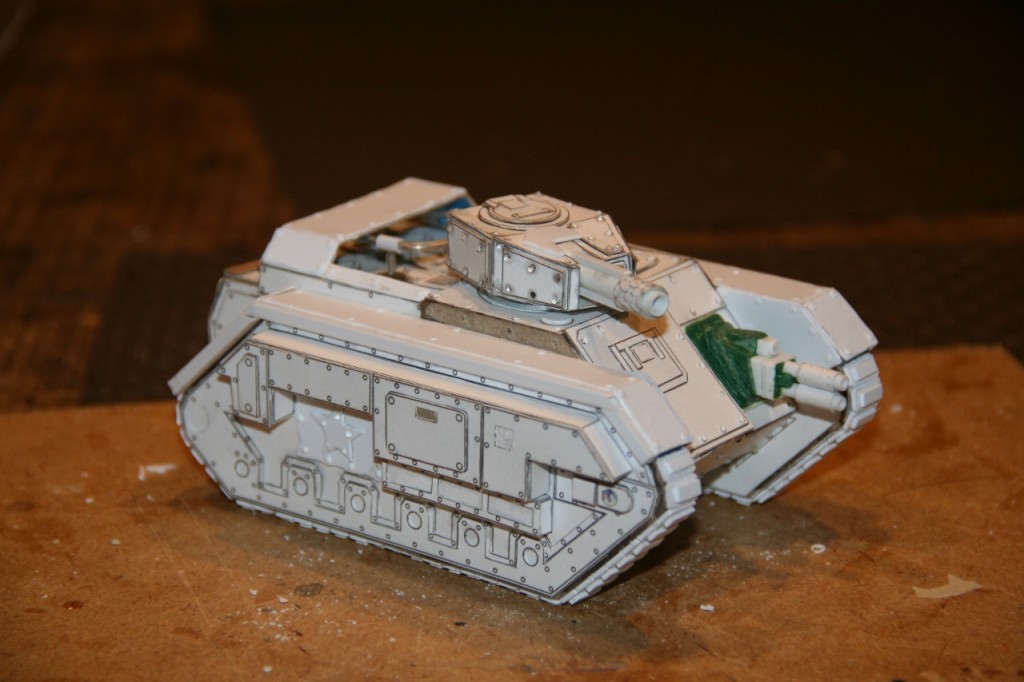
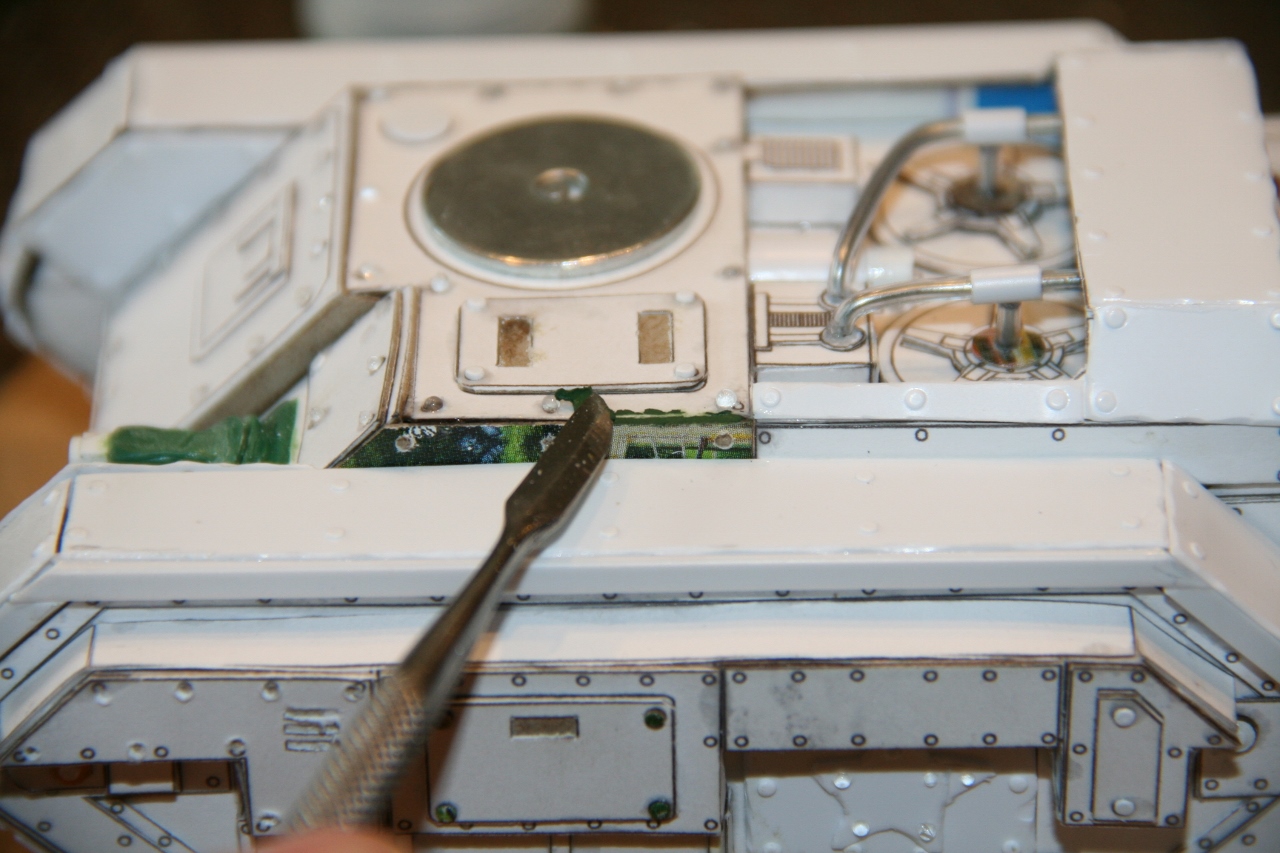

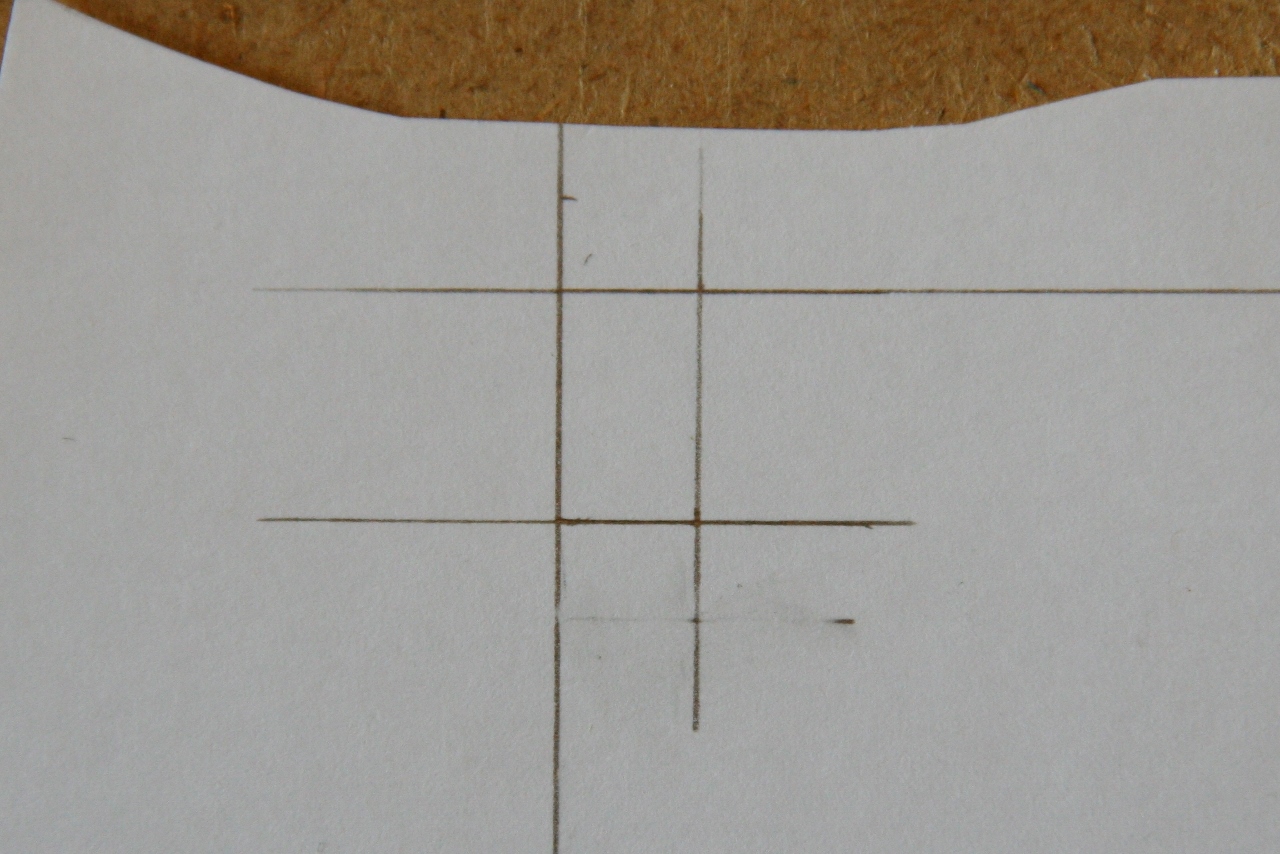
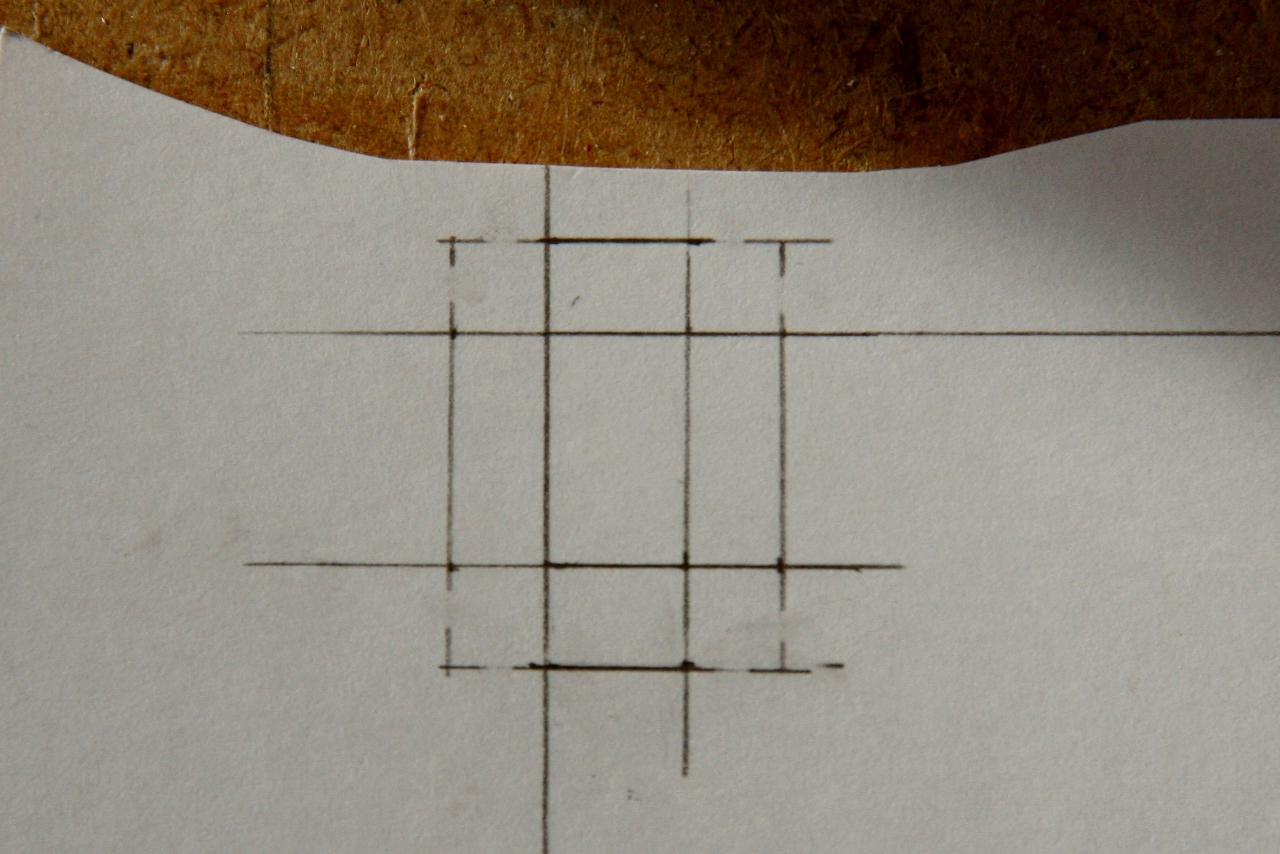

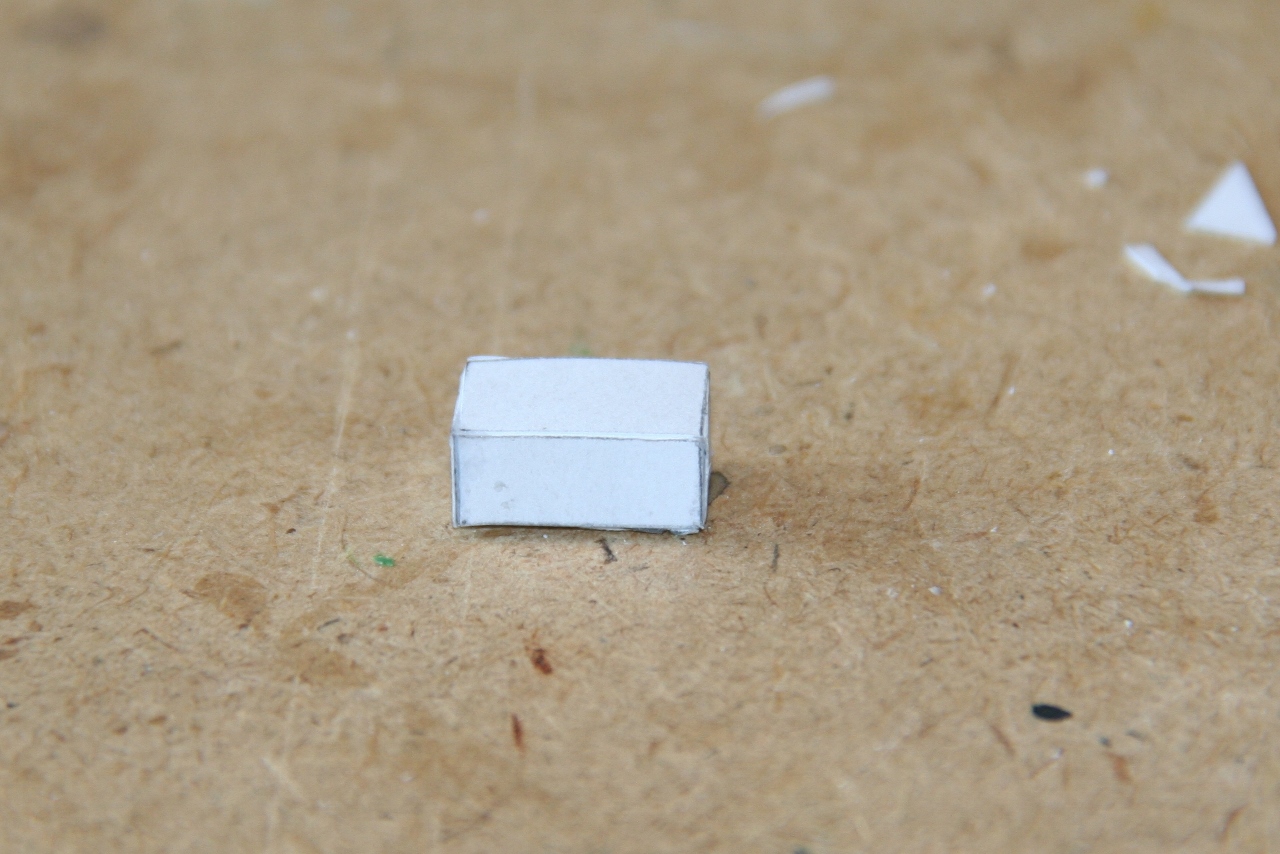
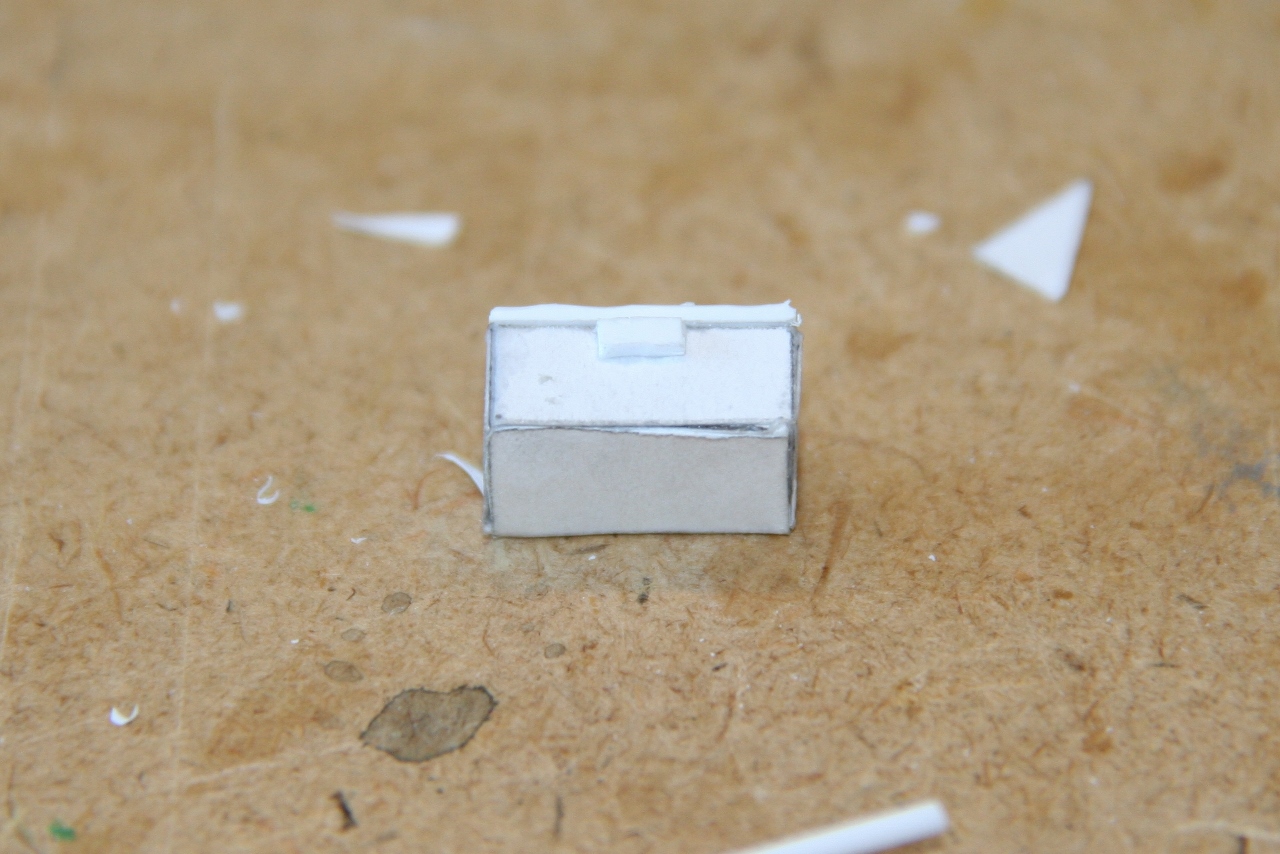
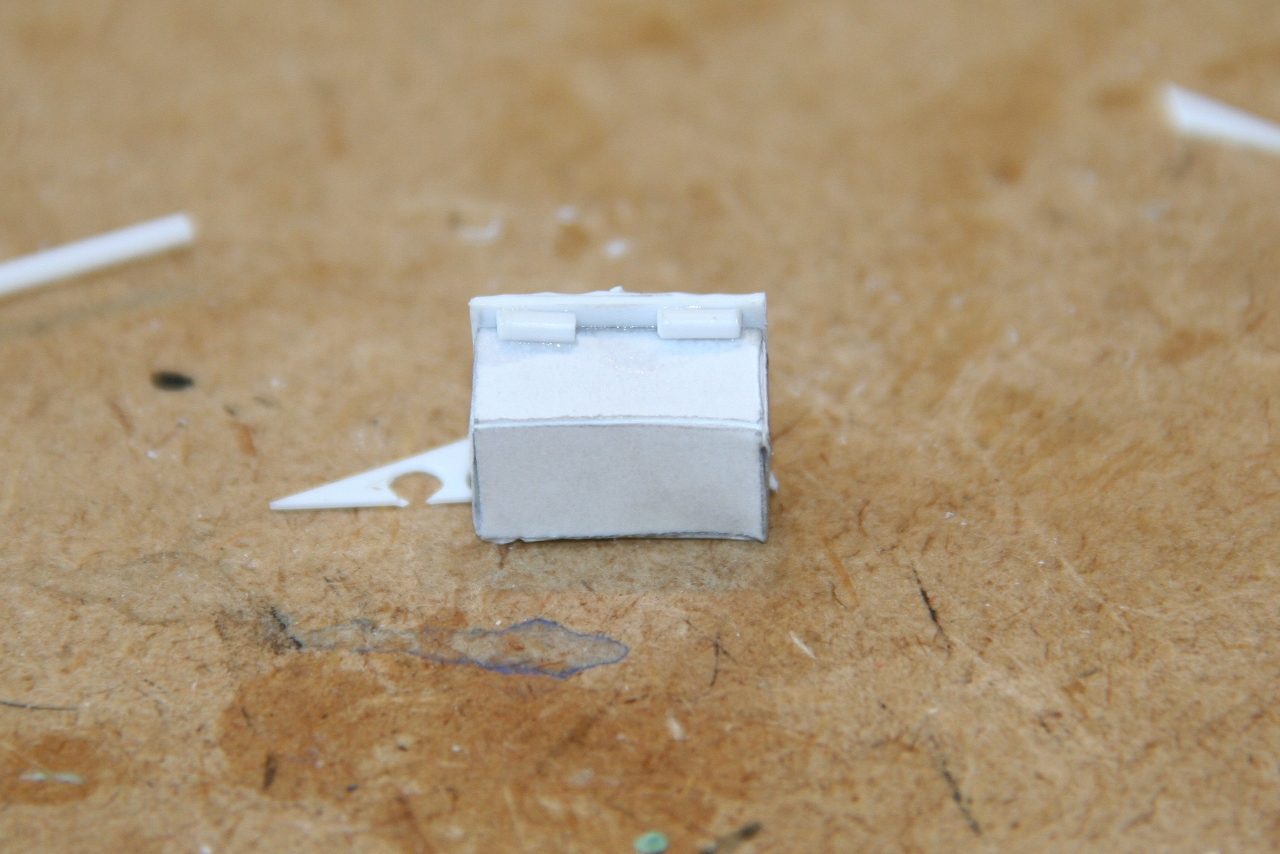
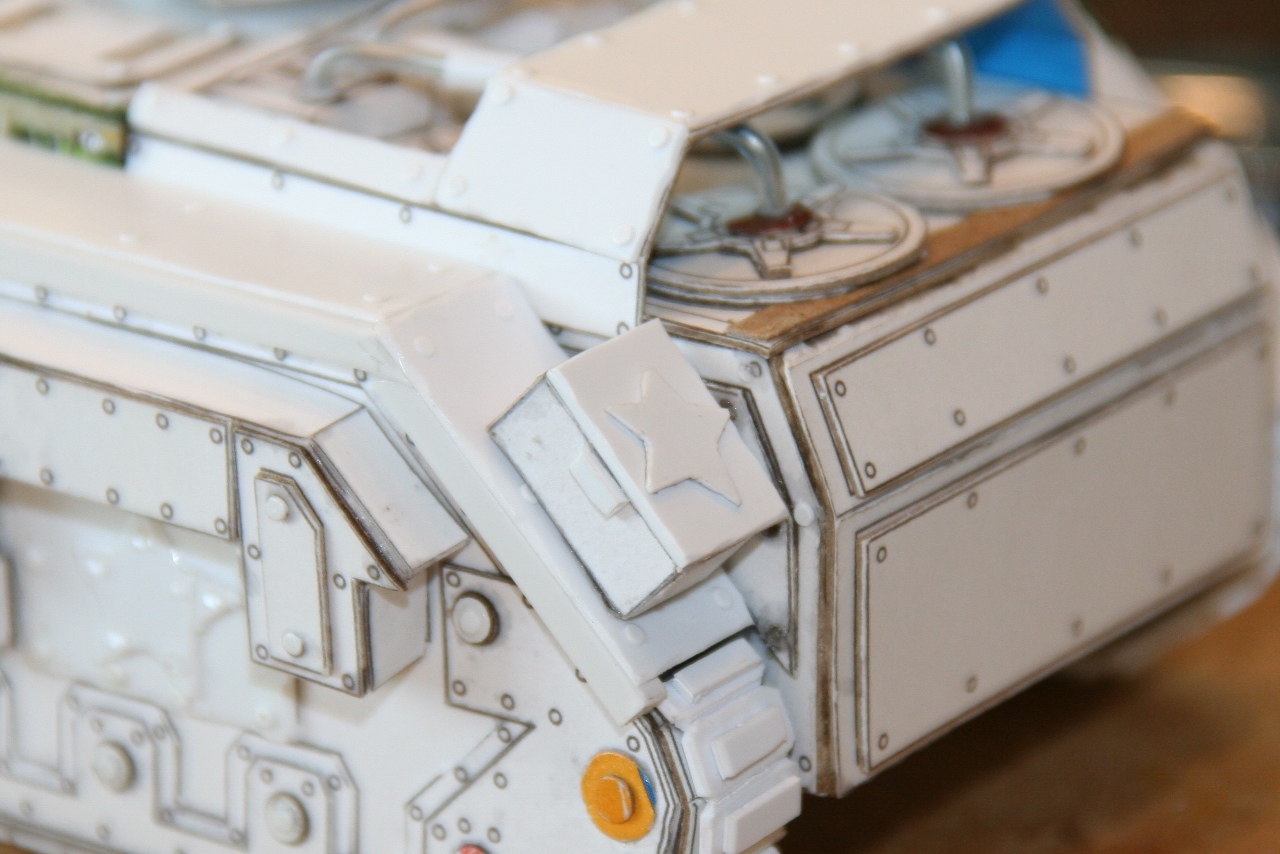
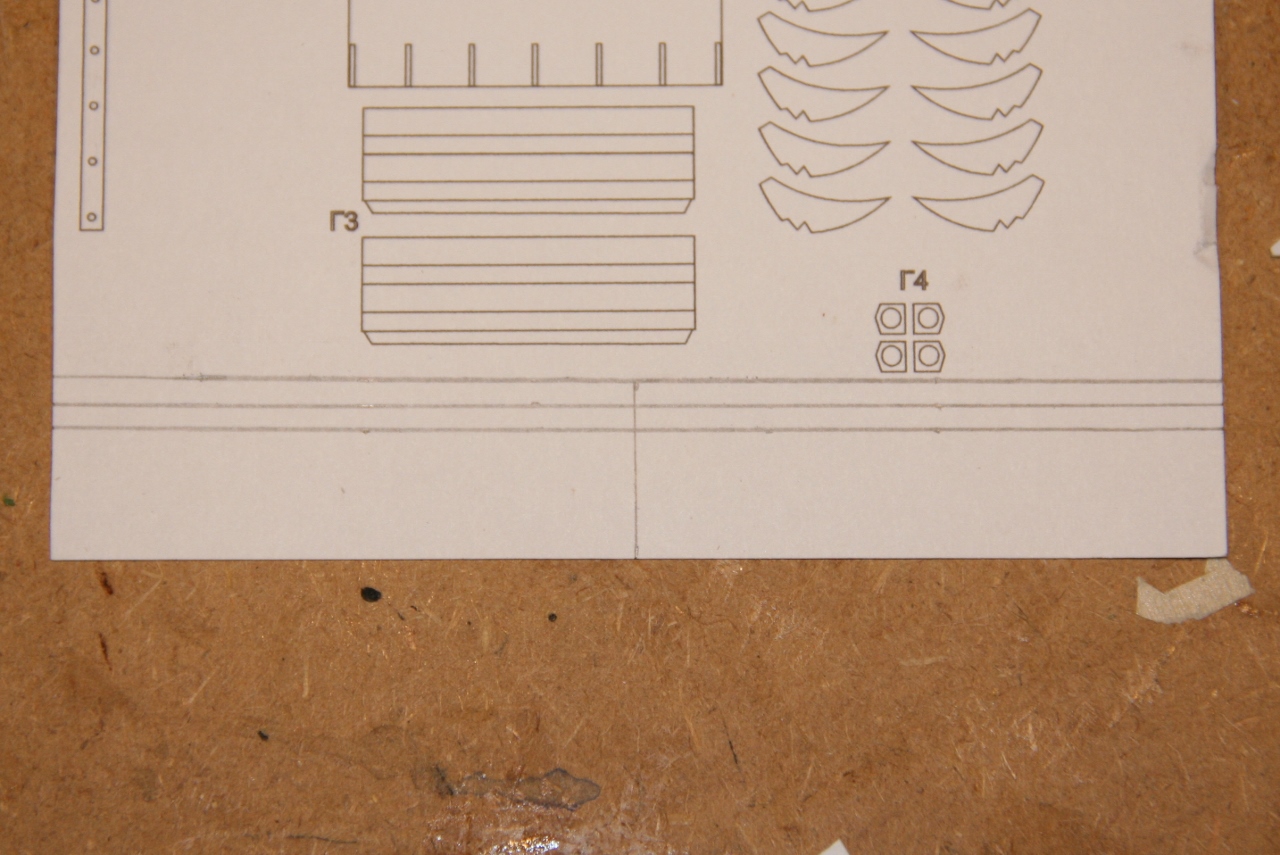
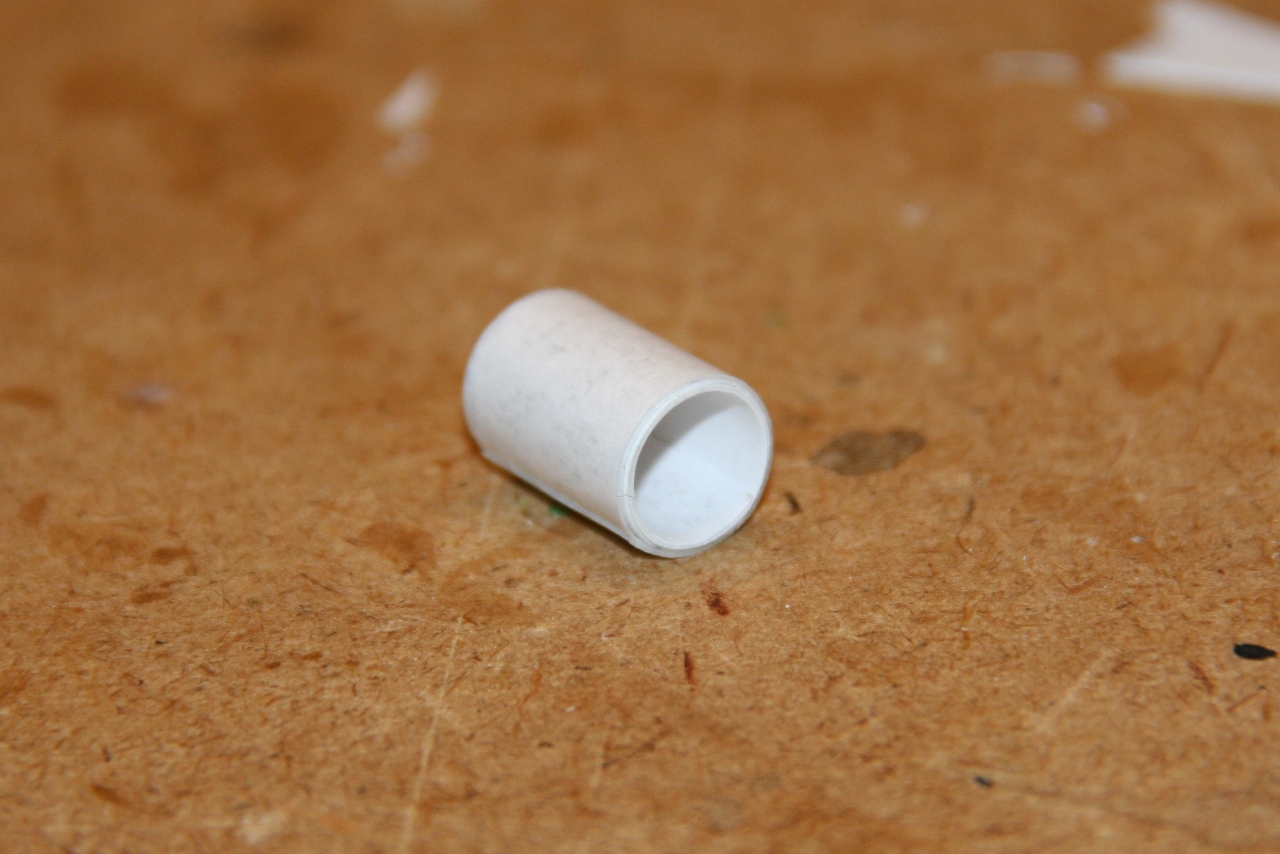
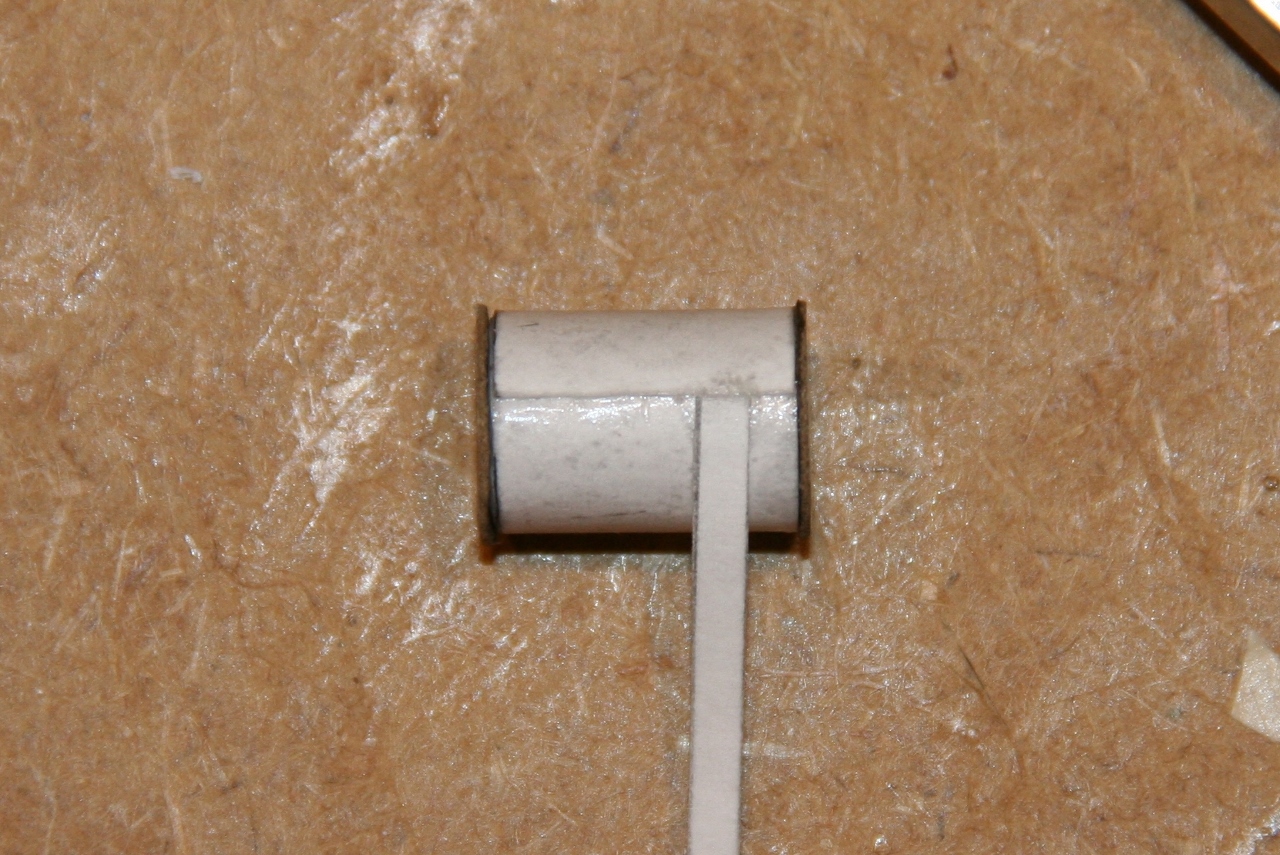
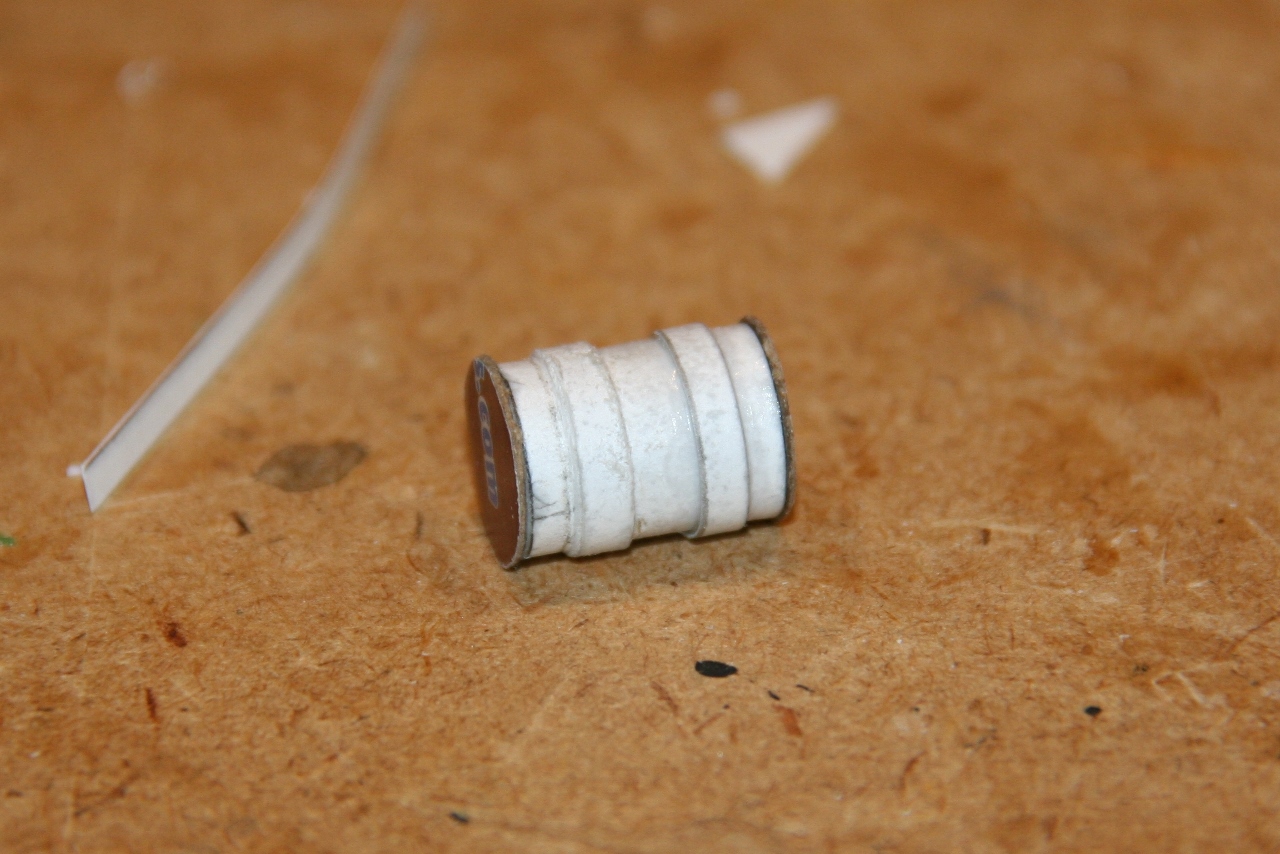
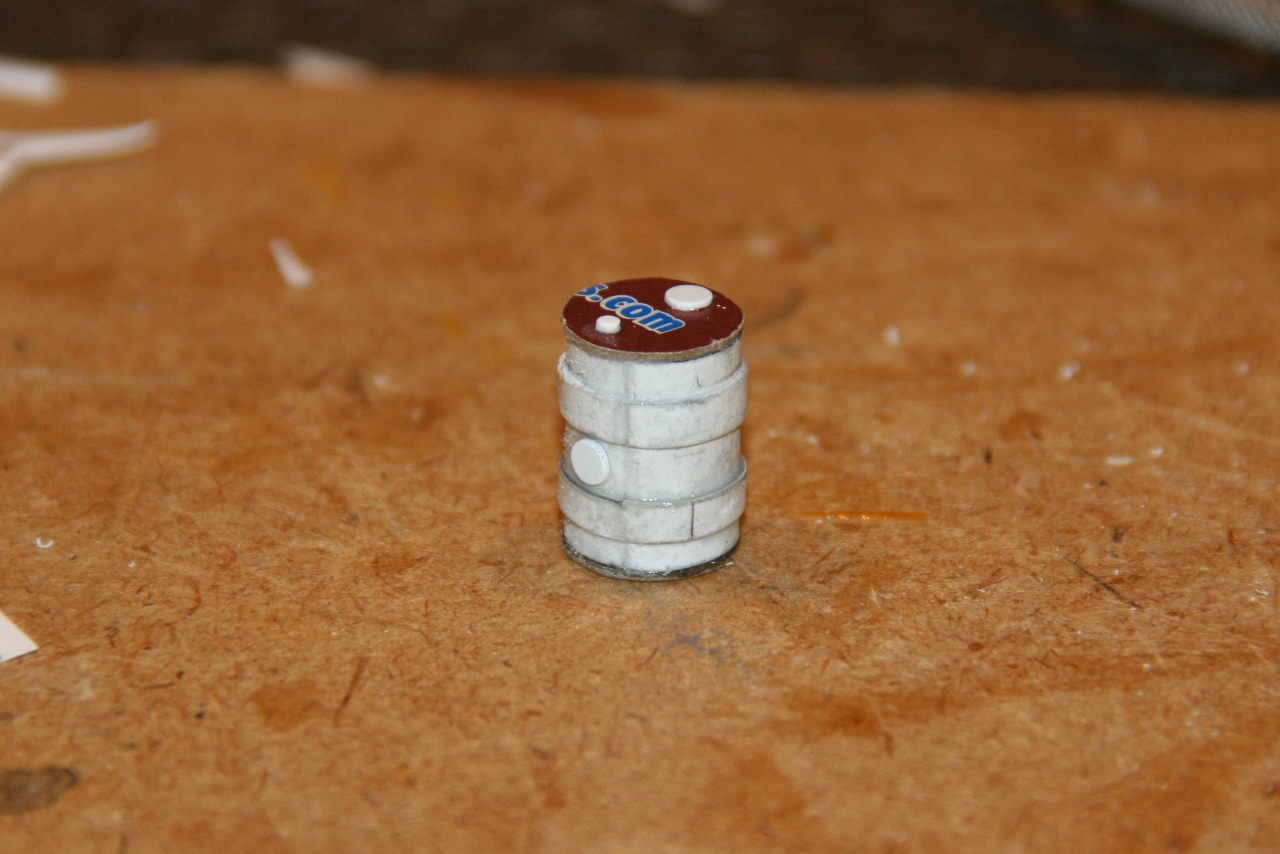

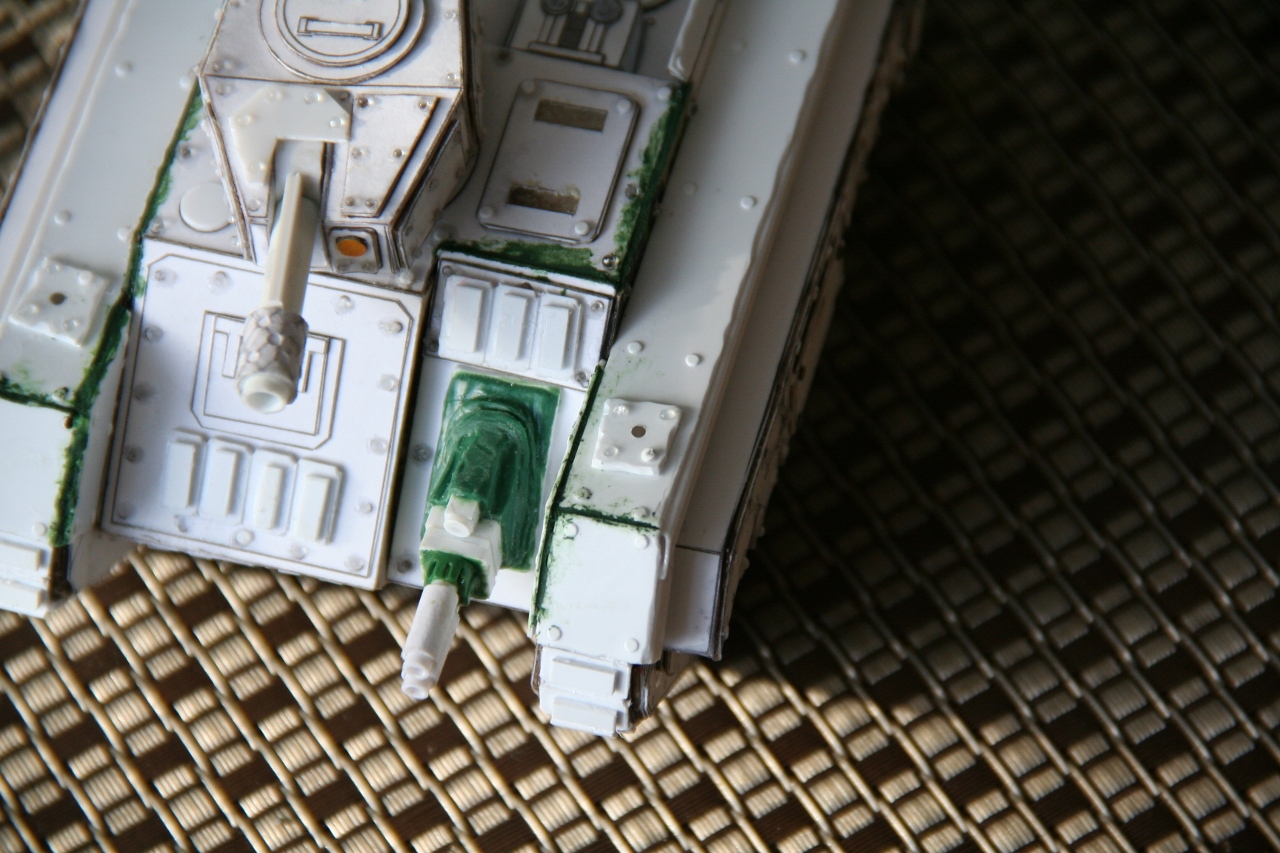
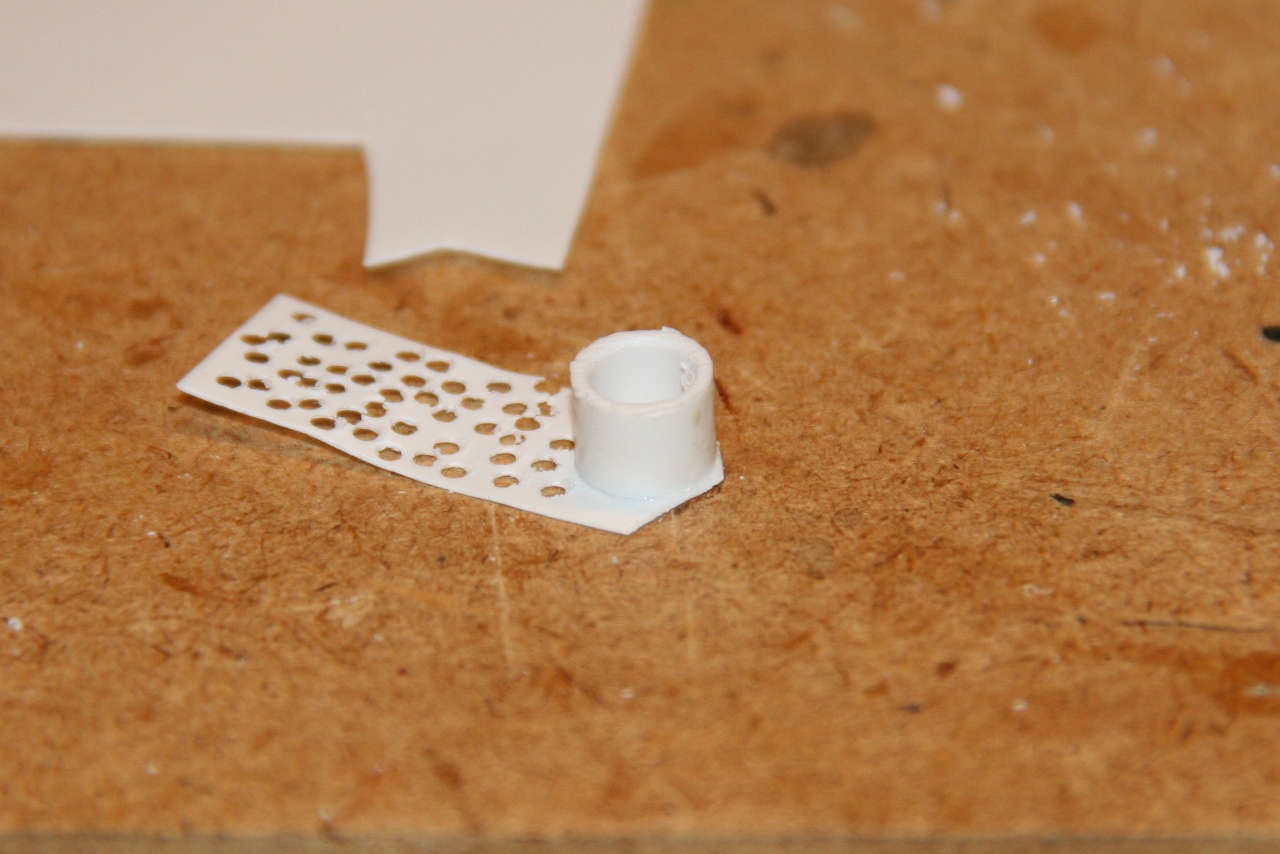

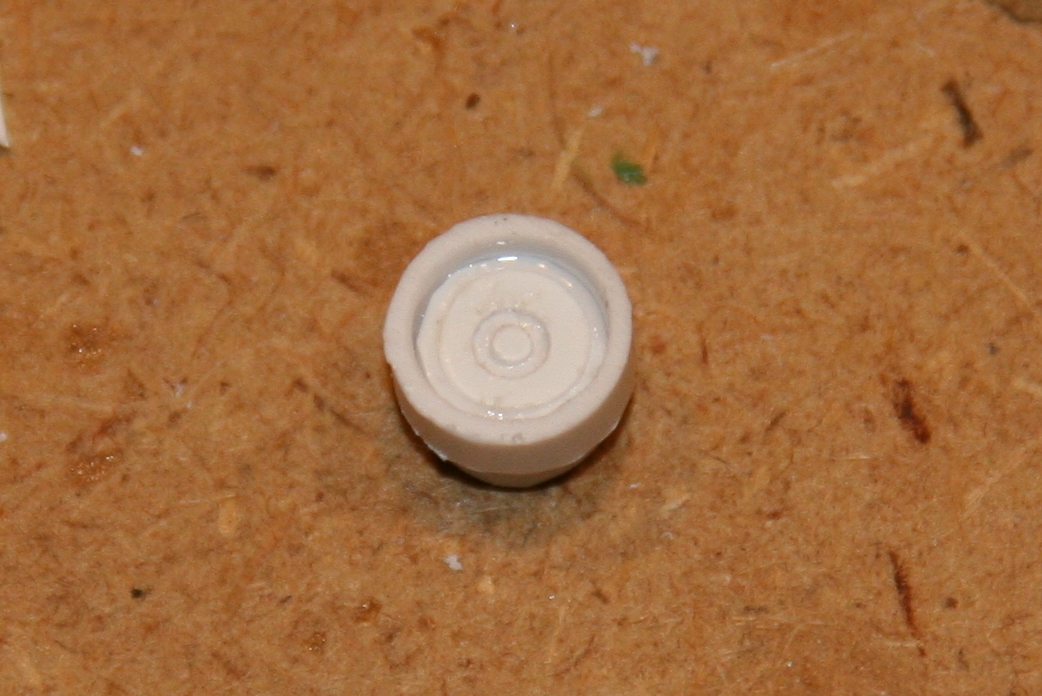

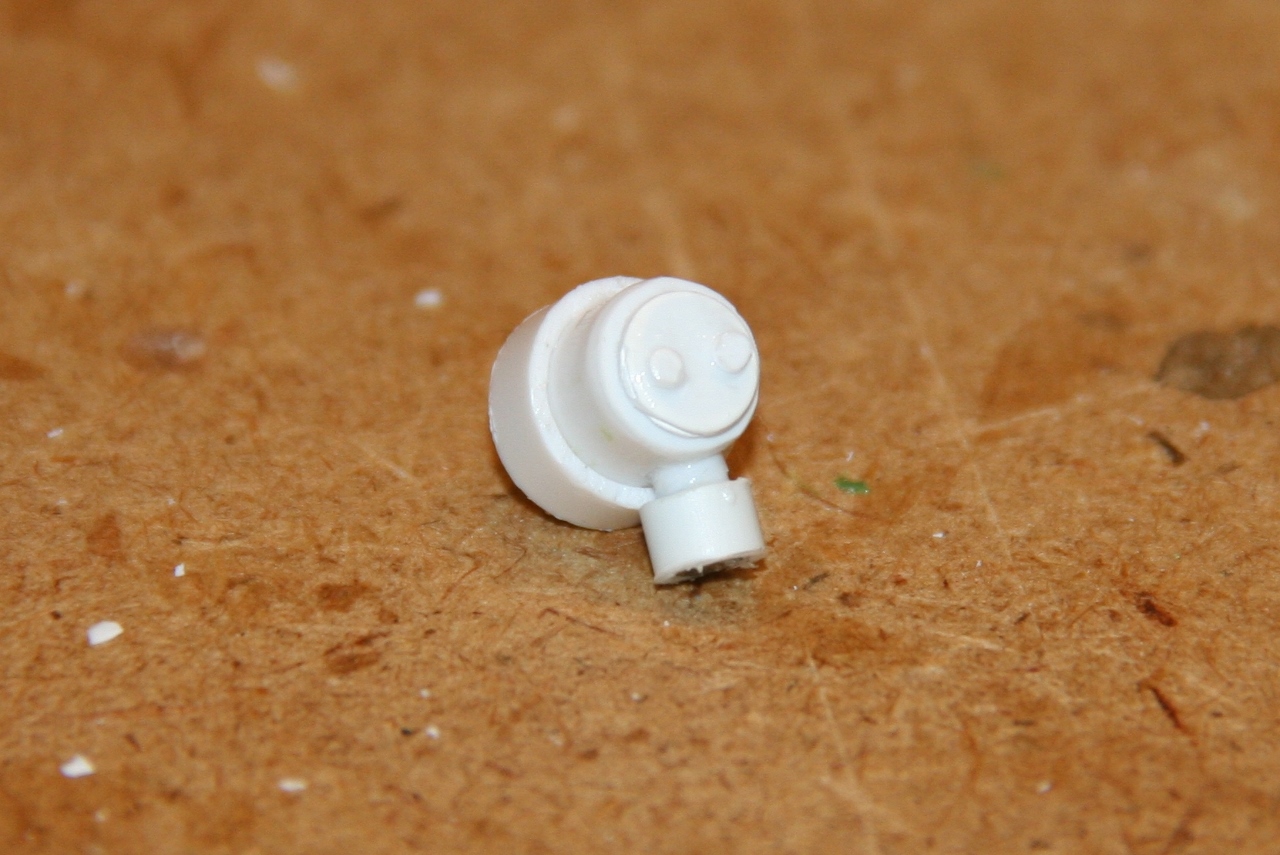
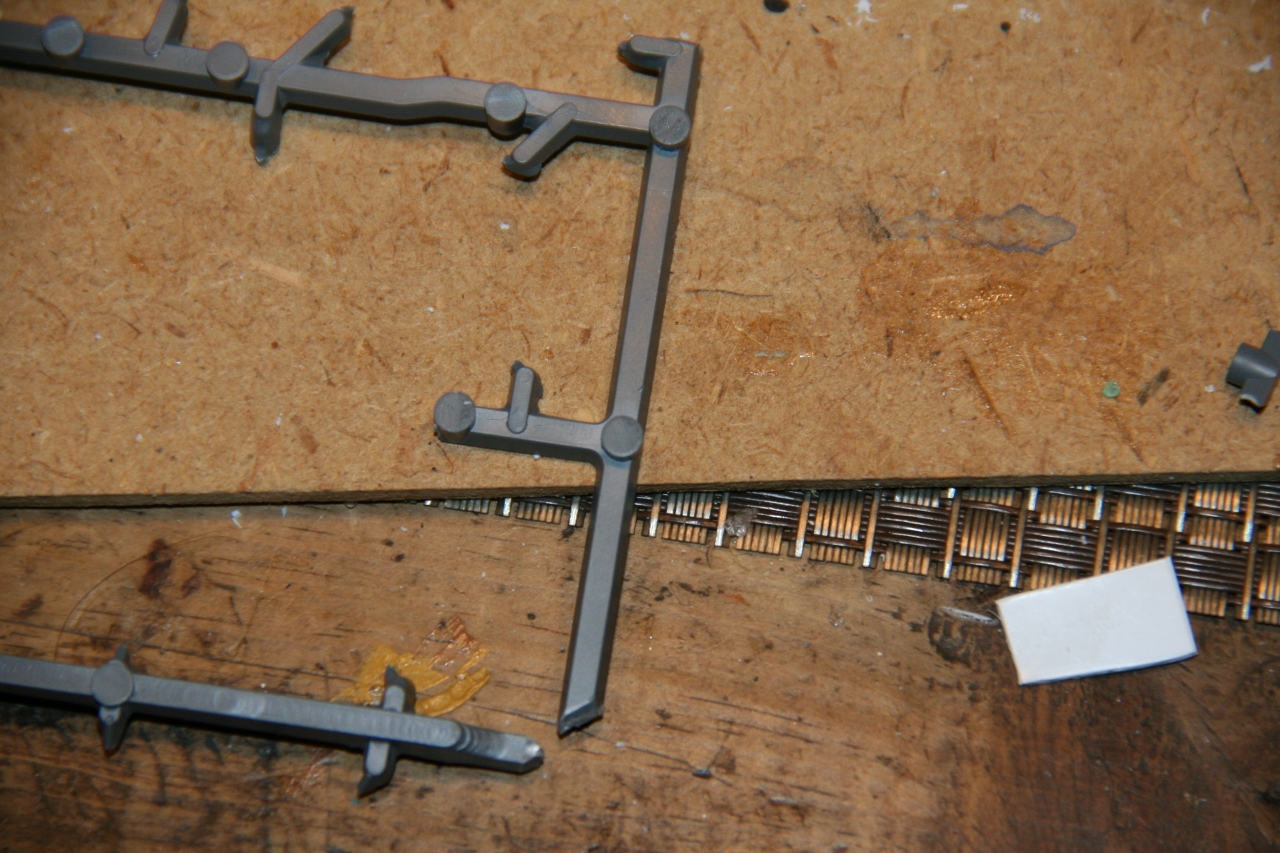


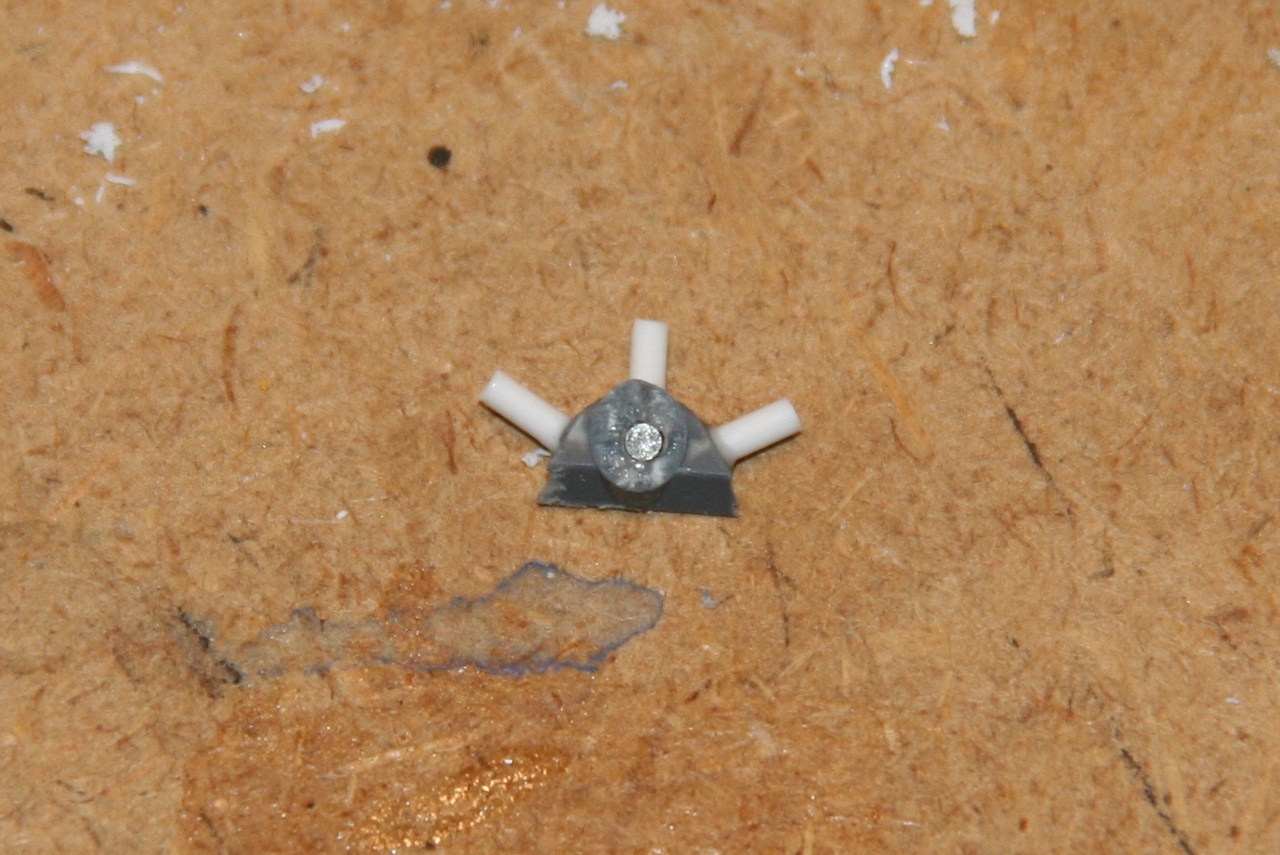
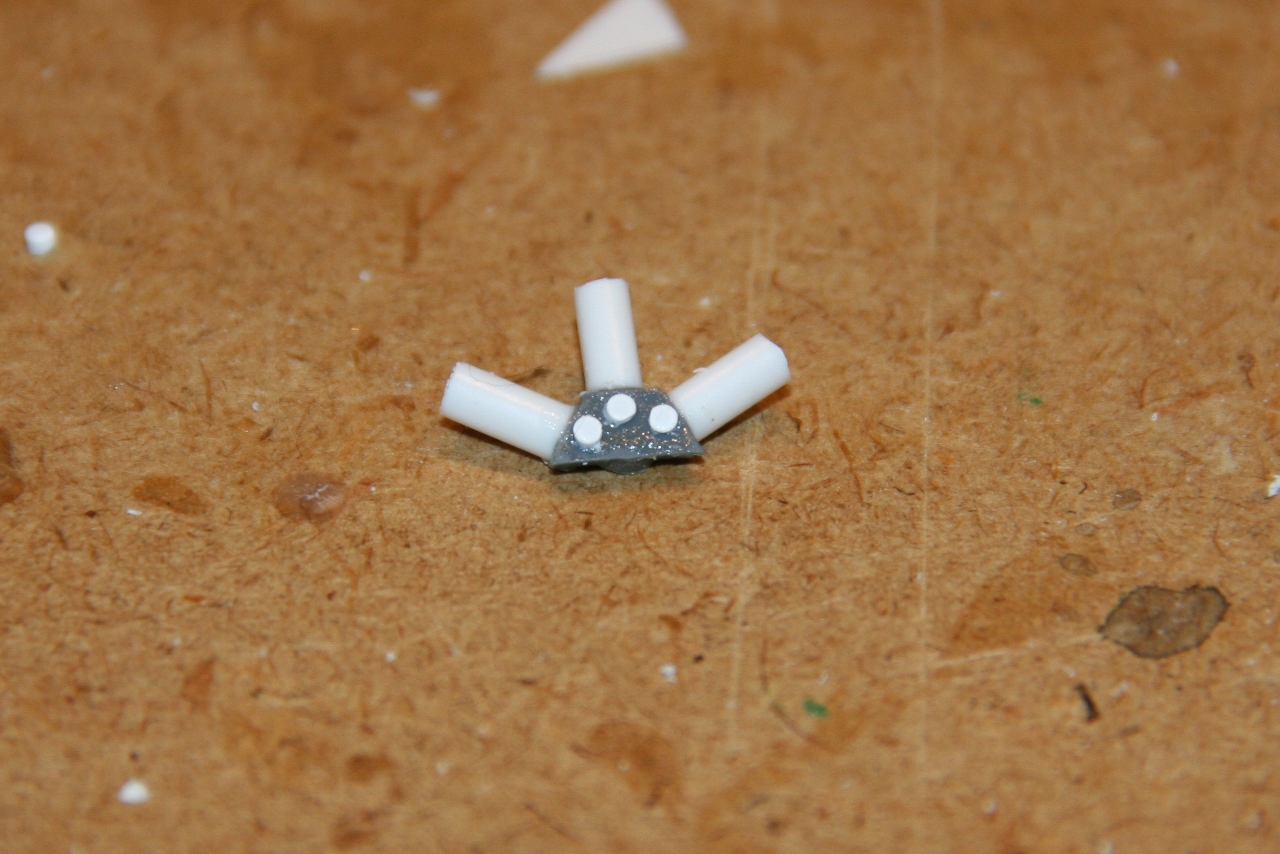
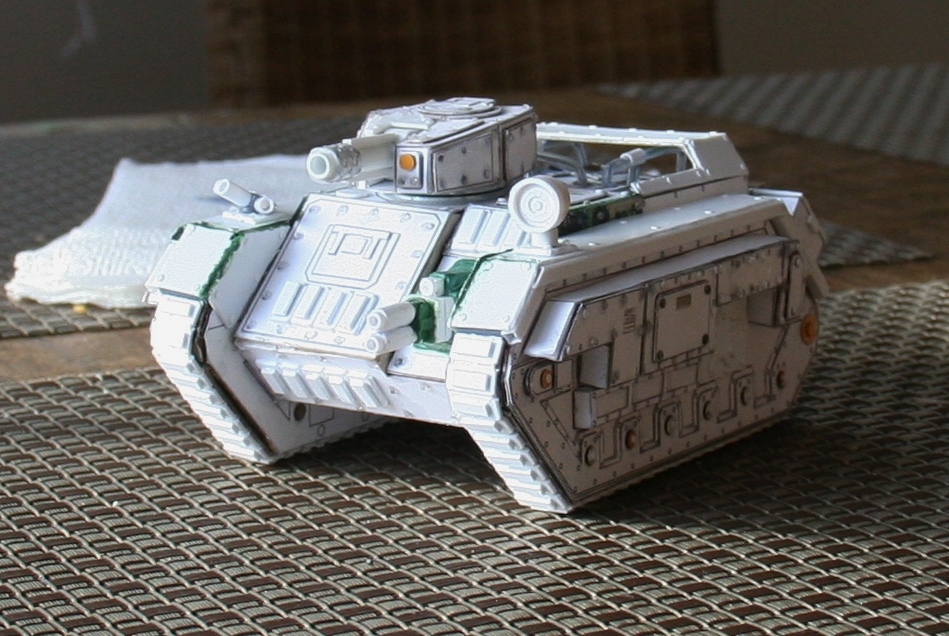
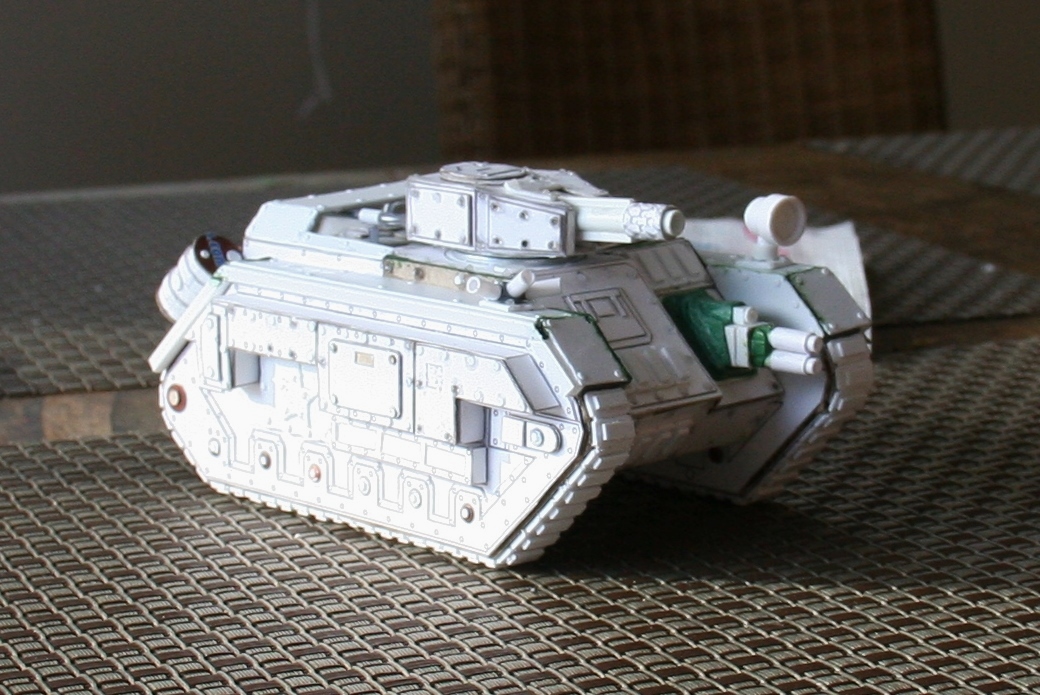
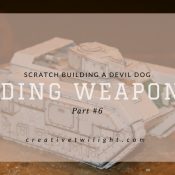

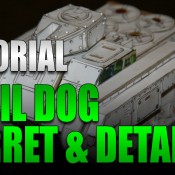
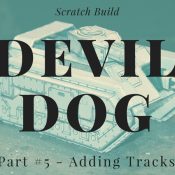
Awesome job. Those details really make the vehicle and pull it all together. Each piece looks good but I especially like the search light; very convincing.
Thanks! I have to admit the searchlight came out better than I’d expected. I’m quite happy with it!
Man, all these little details are really making things look great.
Thanks, I really enjoy working on the details. They make the difference between something that looks OK and something that I’m proud of.
Man, you must be some sort of creative genius to think up how to build all these little gubbins. They really make the model.
Thanks! It’s a bit like drawing: I start by trying to break something down into easily created shapes. Then I add a few details here and there to pull the basic shapes together better.